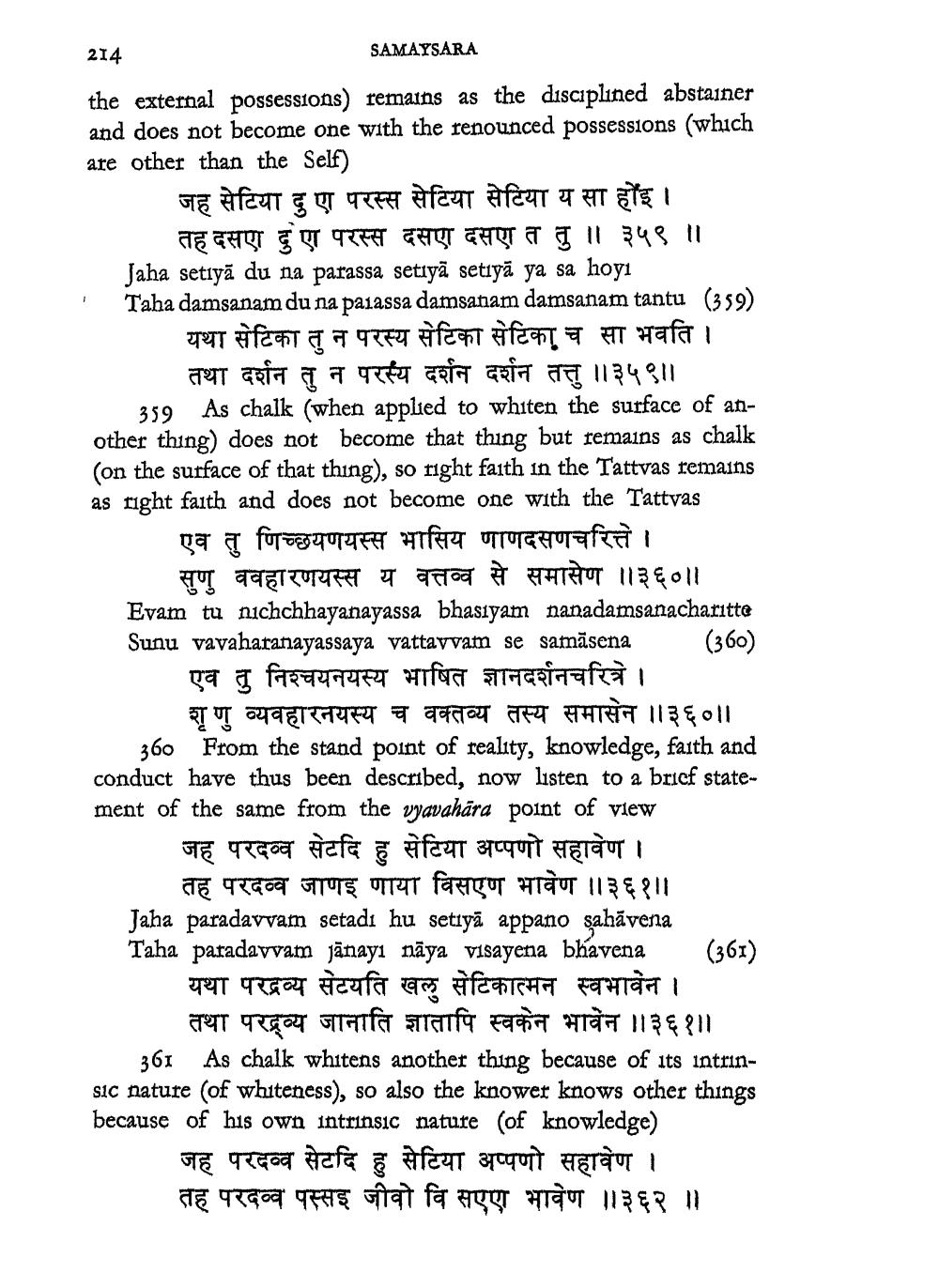________________
SAMAYSARA
214 the external possessions) remains as the disciplined abstainer and does not become one with the renounced possessions (which are other than the Self)
जह सेटिया दु ए परस्स सेटिया सेटिया य सा होइ।
तह दसए दुए परस्स दसए दसए त तु ॥ ३५९ ॥ Jaha setiyā du na parassa setiyā setiyā ya sa hoyi Taha damsanam du na palassa damsanam damsanam tantu (359)
यथा सेटिका तु न परस्य सेटिका सेटिका च सा भवति ।
तथा दर्शन तु न परस्य दर्शन दर्शन तत्तु ॥३५९॥ 359 As chalk (when applied to whiten the surface of another thing) does not become that thing but remains as chalk (on the surface of that thing), so right faith in the Tattvas remains as right faith and does not become one with the Tattvas
एव तु णिच्छयणयस्स भासिय णाणदसणचरित्ते ।
सुणु ववहारणयस्स य वत्तव्व से समासेण ॥३६०॥ Evam tu nichchhayanayassa bhasiyam nanadamsanacharitte Sunu vavaharanayassaya vattavvam se samāsena (360)
एव तु निश्चयनयस्य भाषित ज्ञानदर्शनचरित्रे ।
शृणु व्यवहारनयस्य च वक्तव्य तस्य समासेन ॥३६०।। 360 From the stand point of reality, knowledge, faith and conduct have thus been described, now listen to a brief statement of the same from the vyavahāra point of view
जह परदव्व सेटदि हु सेटिया अप्पणो सहावेण ।
तह परदव्व जाणइ णाया विसएण भावेण ।।३६१।। Jaha paradavvam setadi hu setiyā appano sahāvena Taha paradavvam jānayı nāya visayena bhavena (361)
यथा परद्रव्य सेटयति खलु सेटिकात्मन स्वभावेन ।
तथा परद्र्व्य जानाति ज्ञातापि स्वकेन भावेन ॥३६१।। 361 As chalk whitens another thing because of its intrinsic nature (of whiteness), so also the knower knows other things because of his own intrinsic nature of knowledge)
जह परदव्व सेटदि हु सेटिया अप्पणो सहावेण । तह परदव्व पस्सइ जीवो वि सएए भावेण ॥३६२ ॥




